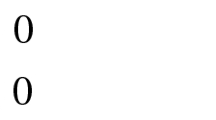Abstract
The main objective of this paper is to improve the efficiency and accuracy of convolutional neural network models for image classification and denoising tasks. The focus of the study is on enhancing the activation layer of these models, which is a critical component that determines the output of each neuron in the network. To achieve this goal, we propose a novel activation function based on Chebyshev polynomials, which is both data-driven and self-learnable. In addition to proposing the LIP model, the authors investigate its performance in approximating various nonlinearities and determine its Lipschitz bound. The study then evaluates the performance of the proposed activation function by conducting experiments on multiple datasets using different convolutional neural network models. The results show that the proposed activation function outperforms other activation layers and significantly enhances the accuracy of image classification and denoising tasks.












Similar content being viewed by others
Data availability
Datasets analyzed during this study are included in the manuscript references section. Requests for any material regarding this manuscript should be made to the corresponding author.
References
Ranzato MA, Boureau Y-L, Cun YL (2007) Sparse feature learning for deep belief network. Advances in neural information processing systems, vol 20. Curran Associates Inc, New York, pp 1185–1192
LeCun Y, Bottou L, Bengio Y, Haffner P (1998) Gradient-based learning applied to document recognition. Proc IEEE 86(11):2278–2324
Li X, Sun Y (2021) Application of RBF neural network optimal segmentation algorithm in credit rating. Neural Comput Appl 33:8227–8235
Zong C, Wang H et al (2022) An improved 3D point cloud instance segmentation method for overhead catenary height detection. Comput Electr Eng 98:107685
Agarap AF (2018) Deep learning using rectified linear units (relu). arXiv preprint arXiv:1803.08375
Van Amersfoort J et al. (2020) Simple and scalable epistemic uncertainty estimation using a single deep deterministic neural network. arXiv preprint arXiv:2003.02037
Huang CQ, Jiang F et al. (2022) Dual-graph attention convolution network for 3-D point cloud classification. In: IEEE Transactions on Neural Networks and Learning Systems, pp 1–13
Bank D, Koenigstein N, Giryes R (2020) Autoencoders. arXiv preprint arXiv:2003.05991
Vincent P et al (2010) Stacked denoising autoencoders: Learning useful representations in a deep network with a local denoising criterion. J Mach Learn Res 11(12):3371–3408
Wang Y, Yao H, Zhao S (2015) Auto-encoder based dimensionality reduction. Neurocomputing 184:232–242
Dugas C, Bengio Y, Bélisle F, Nadeau C, Garcia R (2001) Incorporating second-order functional knowledge for better option pricing. Advances in neural information processing systems. MIT Press, Cambridge, pp 472–478
Clevert D-A, Unterthiner T, Hochreiter S (2015) Fast and accurate deep network learning by exponential linear units (elus). arXiv preprint arXiv:1511.07289
Glorot X, Bordes A, Bengio Y (2011) Deep sparse rectifier neural networks. In: Proceedings of the Fourteenth International Conference on Artificial Intelligence and Statistics, pp 315–323
Maas AL, Hannun AY, Ng AY (2013) Rectifier nonlinearities improve neural network acoustic models. In Proc. ICML 30(1):3
Ramachandran P, Zoph B, Le QV (2017) Searching for activation functions. arXiv preprint arXiv:1710.05941
Misra D (2019) A self regularized non-monotonic neural activation function. arXiv preprint arXiv:1908.08681, vol 4, no 2, pp 10–48550
Agostinelli F, Hoffman M, Sadowski P, Baldi P (2014) Learning activation functions to improve deep neural networks. arXiv preprint arXiv:1412.6830
Carini A, Sicuranza GL (2013) Even mirror Fourier nonlinear filters. In: Proceedings of the IEEE International Conference on Acoustics, Speech and Signal Processing, pp 5608–5612
Nocedal J, Wright S (2006) Numerical optimization. Springer Science and Business Media, Berlin
Goyal M, Goyal R, Reddy PV, Lall B (2020) Activation functions. Deep learning: algorithms and applications. Springer, New york, pp 1–30
Venkatappareddy P et al (2021) A legendre polynomial based activation function: an aid for modeling of max pooling. Digit Signal Process 115:103093
Carini A, Sicuranza GL (2016) A study about Chebyshev nonlinear filters. Signal Process 122:24–32
Rudin W et al (1964) Principles of mathematical analysis, vol 3. McGraw-hill, New York
Agarap AF (2018) Deep learning using rectified linear units (relu). arXiv preprint arXiv:1803.08375
https://www.github.com/meghanabhange/FashionMNIST-3-Layer-CNN
https://www.github.com/umbertogriffo/Fashion-mnist-cnn-keras
Byerly A et al (2020) A branching and merging convolutional network with homogeneous filter capsules. arXiv preprint arXiv:2001.09136
Tanveer MS et al (2020) Fine-tuning DARTS for image classification. arXiv preprint arXiv:2006.09042
Zagoruyko S et al (2016) Wide residual networks. preprint, arXiv:1605.07146
Sun Z, Li Y, Li Y, Jiang T, Sun W (2021) Steady-state mean-square error analysis for non-negative least lncosh algorithm. IEEE transactions on circuits and systems II: express briefs
Goyal B, Agrawal S, Sohi BS (2018) Noise issues prevailing in various types of medical images. Biomed Pharmacol J 11(3):1227
Sadri AR, Zekri M, Sadri S, Gheissari N (2012) Impulse noise cancellation of medical images using wavelet networks and median filters. J Med Signals Sensors 2(1):25
Acknowledgements
Not applicable.
Funding
Not applicable.
Author information
Authors and Affiliations
Contributions
MD and GNVRV prepared manuscript and PV reviewed the manuscript.
Corresponding author
Ethics declarations
Ethical approval
Not applicable.
Conflict of interest
The authors declare that they have no conflict of interest.
Additional information
Publisher's Note
Springer Nature remains neutral with regard to jurisdictional claims in published maps and institutional affiliations.
Rights and permissions
Springer Nature or its licensor (e.g. a society or other partner) holds exclusive rights to this article under a publishing agreement with the author(s) or other rightsholder(s); author self-archiving of the accepted manuscript version of this article is solely governed by the terms of such publishing agreement and applicable law.
About this article
Cite this article
Deepthi, M., Vikram, G.N.V.R. & Venkatappareddy, P. Development of a novel activation function based on Chebyshev polynomials: an aid for classification and denoising of images. J Supercomput 79, 20515–20531 (2023). https://doi.org/10.1007/s11227-023-05466-y
Accepted:
Published:
Issue Date:
DOI: https://doi.org/10.1007/s11227-023-05466-y




